A detailed review of methods of player retention and monetization in Subway Surfers.
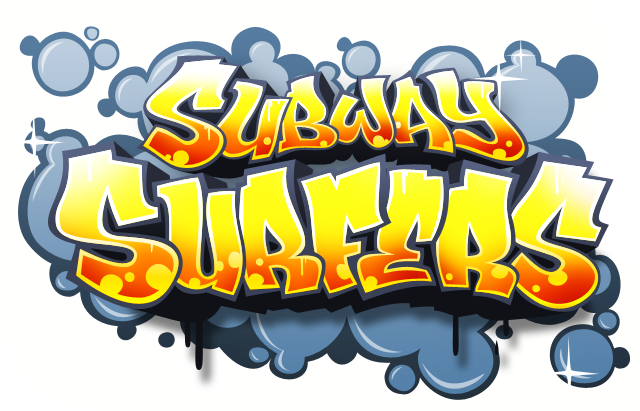
For starters, there are some figures that explain our choice of Subway Surfers for this review. The assessments made by the analytical company App Annie show that Subway Surfers has become the most frequently downloaded game on Google Play in the world (for the last 4 years).
The game can still be seen among top downloads in more than 80 regions of the globe (statistics vary from date to date but on April 12, the game was at the peak of charts in 87 countries).
Those are pretty impressive figures. Most impressive even if we talk general performance on the market. Can they, however, be called extraordinary for runners as the genre? Given the high download rate of similar titles, the answer is rather “no”. The more important question is how Subway Surfers has been able to retain such success throughout many years. Let’s try to clear it up.
Gameplay
As for gameplay, Subway Surfers is very close to Temple Run. At the same time, it is not a clone of Imangi but, rather, an attempt at correction of the title’s mistakes.
Kiloo has simplified the gameplay of Temple Run: they have taken out the turns. In Kiloo’s masterpiece, you are running in an infinite straight line. Moreover, the developers had decided against gyroscope.
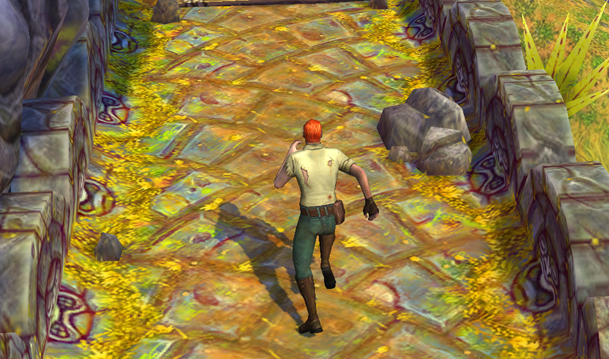
Temple Run 2 was quite a disappointment, but it’s metrics are fine, though
As a result, the game had become even more user-friendly. Can you imagine a more straightforward action?
On the profile of Temple Run 2 at the App Store, there are more than few negative commentaries of a certain kind. The users who left them complain that some intersections are poorly visible. There are indeed “blind spots” on the track. You can easily miss an intersection or turn and fall into the abyss. Another annoyance is integrated gyroscope: the players have to twist their necks after their smartphones to take a turn.
Devoid of these aspects, Subway Surfers has become popular as a title with low entry threshold.
The novelty brought by the designers of Subway Surfers is a division of the player’s path into three tracks. The character has to jump between them to avoid both static and dynamic obstacles that keep the player on the toes. As for the rest of the mechanics, it is a good old infinite runner: the player swipes his character across the display, collects coins and bonuses, and buys new heroes.
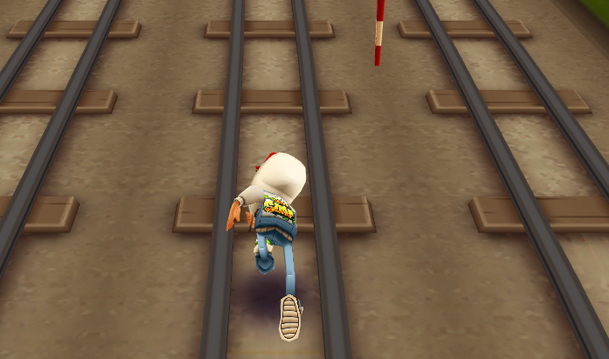
Subway Surfers
So, why is that title more successful than many similar ones?
Concept
Subway Surfers had been developed by two teams. Sybo had created the concept and art while Kiloo had taken responsibility for the user interface, monetization and player retention.
The concept is clear: Subway Surfers is a 3D runner. The art style is animated and colorful, pretty much cartoonish, which attracts both children and women. The major motive of the setting is a protest (a free graffiti artist is trying to escape from a policeman), which to a certain extent reflects reality (there are still explosions of unrest throughout the USA and Europe).

The young revolutionary is doing a mural of Che Guevara
Could that be a definitive cause of success? Of course not.
Retention
The principal achievement of the developers of Subway Surfers is user retention. Kiloo had resorted to means that are well familiar to creators of MMOs.
To put it short, there are four types of players: achievers, explorers, socialisers, and killers. The purpose of the developers is to satisfy every representative of each type in the game.
Achievers pursue numbers: they want more and more points, levels and wealth. Explorers strive to discover every corner of the game world, reveal all secrets and see all possible features. For socialisers, communication is king. Finally, killers play to dominate everyone else and win the total respect of the community.
Kiloo had attempted to please all types of players, while not forgetting about the classical methods of retention known to every mobile app designer.
1. Levelboard
You can see your friends’ records and activity in-game.

Game designers Vic and Ksenia and political scientist Olesya are better than me at Subway Surfers
However, the key feature of Subway Surfers is that as you run, you see results of other competitors. This is not some abstract board that you look at a couple of times a day at best; this is a constant reminder that “you are lagging behind, dude”.

Dmitry is still better
It works well for the retention of both achievers and killers.
2. Missions
Each mission consists of three tasks, and each mission rewards the player with an additional point multiplier. Simply put, the more missions you complete, the faster you get new points.

A little more effort, and you get another multiplier
This is a nice incentive for achievers.
Explorers will like missions, too, because they pose a challenge and provide an opportunity to see more of the game.
3. Daily challenges
Social and mobile games widely use an approach that can be called “daily rewards”. The developers urge the players to return by granting them in-game currency. Kiloo had done pretty much the same, but their approach is more exquisite.

The more often you play, the bigger prizes you get
To receive a reward, the player must compose some word from letters on the track. It takes no more than five minutes, but it is enough to draw the player’s attention to the levelboard where the results of his or her friends are exhibited, and that may prove to be a strong motivator.
Thus, Kiloo had made challenges with a purpose of hooking players.

I’ll get lots of coins tomorrow!
The aforementioned levelboard not only showcases the records and activity of your friends but also passively brings additional resources. Every time some of your friends make 50 runs, you get a fixed amount of in-game currency. Of course, the same works for your friends.
4. Content
There are items and characters in Subway Surfers that cannot be bought (for monetization, read below). For example, the Chicky Board (more on boards in the monetization chapter) is a reward for 100 easter eggs. If you are quick and lucky, you can make it in 50 runs.

The next month, this lovely board is removed from the store. Sorry, limited edition.
Achievers and explorers will jump out of their skins to get it.
5. Customization
Subway Surfers features an exciting amount of various characters and hoverboards.
6. Trophies.
Those are very rare items that you can find on the track. Explorers make hundreds of runs to get that kind of stuff.
7. Regular updates
For Kiloo, it is of special importance to make graphic alterations of the track and add new characters every month. Some of the fresh heroes can only be accessed in the course of 30 days. That makes the players return to Subway Surfers again and again just to see what has changed this time.

Hurry up, soccer fans!
As you can see, almost everyone can find something to do in Subway Surfers, except that socialisers are a bit deprived of their precious communication. For some of them, though, competition with friends is enough to be happy in the game.
Monetization
Monetization in Subway Surfers is quite moderate: you can easily earn up to one million points (which is much but far from limit) without paying a penny. In this game, skill definitely rules. At the same time, almost everything else can be bought.
1. Missions
As we mentioned before, the more missions you have completed, the faster you get points. The tasks are not hard, but still, they can be skipped, which will cost you real money.
2. Bonuses and upgrades
As any runner, Subway Surfers features one-shot boosts; for instance, you can skip the first few thousand meters of the track. There are also paid upgrades for power-ups scattered across the road.
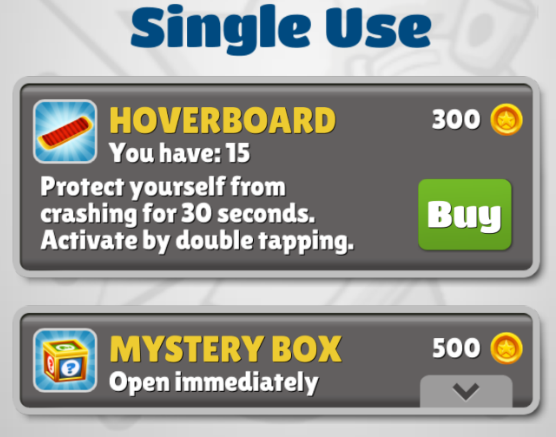
The prices are not very heavy on the player
Upgrades prolong the active time of power-ups (money-drawing magnets will work for 10 seconds instead of 5, etc.). Bonuses and upgrades can also be bought for in-game currency. At the beginning, they cost a little, but a level 5 magnet will require a half an hour of coin grinding… or a donation, if you so wish.
3. Customization
Some of the game’s characters cannot be bought but there are few of those. Interestingly, their design appeals to the hardcore segment of the playerbase. Just look at the geek girl Yutani.

It’s really hard to collect 500 flying saucers
There are 11 purchasable characters. Most of them are cheap enough to earn their worth in coins. On the other hand, the SWAGgering Brody or Arabian sheikh Prince K are so expensive that investing real money may seem more reasonable than investing time.

We are sure that many Arabian players have purchased that character
The design of these two characters is aimed at a very certain group of players – those who have some spare bucks.
4. Advertisement
Sometimes when you move to the main menu, a huge banner will appear. Despite its size, it doesn’t bother anyone very much and increases the developers’ profit. In addition to that, you can earn in-game currency by watching ad videos in a special section.
5. Boards
Undoubtedly, boards are the main feature of Subway Surfers. Most of the time, the character runs, but he can also mount some kind of a skateboard that hovers instead of rolling.
Boards are disposable bonuses that are activated on the track, last for a limited amount of time and have a specific function.
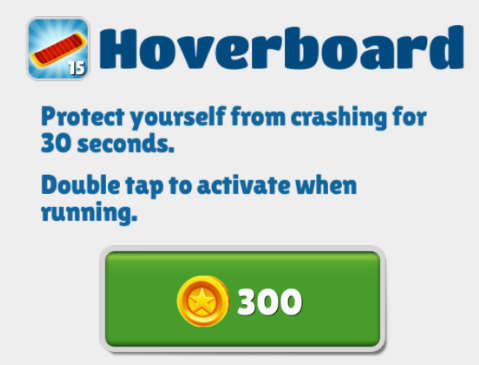
The way text is framed matters, too. Two short sentences are divided into paragraphs
In Temple Run, when you bump into an obstacle, you can resume if you have crystals that are purchasable for real money. In Subway Surfers, when you run into an obstacle, you have to start all over.
You can avoid that if you have boards. If you see you are going to fail, just activate a board and fly over any obstacle. One player can have a limitless amount of boards. To collect as many coins as possible from one run a lot of boards is required (the higher is one’s skill, the fewer of them are needed). The catch is that some players gather fewer coins on one track than they will have to spend buying boards for the next run. Without the boards, it is too much sweat, and the risk of making a mistake is much higher.
Having realized that, many decide to purchase boards for real money and continue the fun on the run.
6. One purchase per game
Another source of profit for the developers of Subway Surfers is double coins. This is a permanent bonus that doubles the harvest of coins from each run.
It’s another trick from Kiloo to attract players who don’t like F2P. They kind of buy the game, because there is almost no need for microtransactions with double coins. A similar strategy is exploited in Clash of Clans. The price of the first Builder’s Hut that you purchase equals minimal IAP. Some players can do with little and just go on, but others want more, so they will continue to invest real money.
What else have you noted in Subway Surfers that may be interesting? Feel free to share your thoughts!
